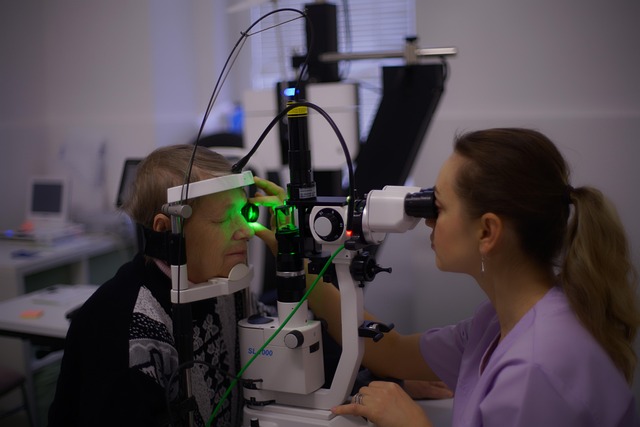Workers comp insurance for medical practices is essential for protecting healthcare professionals and their businesses, covering medical expenses, income replacement, and rehabilitation for work-related injuries or illnesses. Clinics must understand state regulations, occupation-specific hazards, and employee needs to choose policies ensuring compliance, staff safety, patient care, and efficient operations. Identifying risks and selecting tailored coverage based on operational needs is crucial for minimizing disruptions and maintaining quality patient care while adhering to legal requirements. Best practices include staff training, regular policy reviews, clear communication, and proactive risk management strategies that have led to significant reductions in workplace injuries and workers' comp premiums in successful healthcare settings.
In the dynamic landscape of healthcare, ensuring compliance with regulations is not just a best practice—it’s an imperative. When it comes to workers compensation (WC) insurance for medical practices, navigating the complexities can be daunting. This comprehensive guide delves into the intricacies of WC insurance specifically tailored for clinics, highlighting why compliance is crucial. We explore common risks, policy selection strategies, and best practices to foster a compliant environment. Additionally, real-world case studies demonstrate successful implementations, providing valuable insights for healthcare providers aiming to stay ahead in a rapidly evolving industry.
- Understanding Workers Comp Insurance for Medical Practices
- Why Compliance is Crucial in Healthcare
- Identifying Risks in Clinics and Ambulatory Care Centers
- Selecting the Right Workers Comp Policy
- Best Practices for Maintaining Compliance
- Case Studies: Success Stories of Compliant Clinics
Understanding Workers Comp Insurance for Medical Practices

Workers comp insurance for medical practices is a crucial component in ensuring the financial protection and well-being of healthcare professionals. It provides coverage for employees who sustain work-related injuries or illnesses, offering medical expenses, income replacement, and rehabilitation services. For clinics, understanding this type of insurance is essential to navigate the complexities of running a healthcare business while adhering to legal requirements.
Knowing the scope of workers comp insurance involves recognizing its role in mitigating risks and providing peace of mind. Medical practices must choose policies tailored to their specific needs, taking into account factors like employee count, occupation-specific hazards, and state regulations. By doing so, they can ensure compliance and create a safe environment for both staff and patients, fostering the efficient operation of their clinic.
Why Compliance is Crucial in Healthcare

Compliance is of paramount importance in the healthcare sector, where even minor lapses can have significant consequences. For medical clinics, ensuring adherence to regulations and standards isn’t just a legal requirement; it’s essential for maintaining patient safety, preserving reputational integrity, and fostering trust. Non-compliance can lead to severe penalties, legal disputes, and damage to the clinic’s public image, impacting its sustainability and growth.
Workers comp insurance for medical practices plays a pivotal role in this context. It not only provides financial protection against work-related injuries or illnesses but also ensures that the clinic remains compliant with labor laws and safety regulations. By having the right workers comp coverage, healthcare providers can safeguard their operations, minimize disruptions, and continue offering quality patient care without the added burden of legal complexities.
Identifying Risks in Clinics and Ambulatory Care Centers

Identifying risks in clinics and ambulatory care centers is a crucial step in ensuring compliance-ready workers’ compensation for medical practices. These facilities, despite their focused nature, are not immune to potential hazards. From patient handling incidents to exposure to infectious diseases, understanding these risks is key to implementing effective safety measures.
Medical professionals often engage in physically demanding tasks, including lifting patients and moving equipment, which can lead to musculoskeletal disorders. Additionally, the risk of needlesticks and other sharps injuries is ever-present due to the nature of healthcare work. By thoroughly assessing these and other relevant risks, clinic owners and managers can make informed decisions about acquiring suitable workers’ comp insurance for medical practices, ensuring both the well-being of their employees and regulatory compliance.
Selecting the Right Workers Comp Policy

When choosing a workers’ compensation (WC) policy for your clinic, it’s crucial to consider the unique needs of your medical practice. Different policies cater to various risk factors, so assess your operations thoroughly. For instance, if your clinic employs a large number of employees handling hazardous materials or with high injury risks, you’ll need a robust WC plan that covers extensive medical and indemnity benefits. Medical practices also face specific legal requirements and industry standards, ensuring your chosen policy aligns with these is essential for compliance.
Look for WC insurance providers specializing in covering healthcare organizations, as they can offer policies tailored to the nuances of medical practices. These policies should provide adequate coverage for medical expenses, lost wages, and permanent disability benefits. Additionally, consider options that include legal defense fees, which can be significant in the event of a workers’ comp claim. The right WC policy will protect your clinic’s financial health while ensuring compliance with state regulations, ultimately safeguarding against potential legal issues and promoting a safe work environment.
Best Practices for Maintaining Compliance

Maintaining compliance with regulations regarding workers comp insurance for medical practices is essential to protect both employees and employers. Best practices involve ensuring that all staff are adequately trained on workplace safety procedures and risks specific to healthcare settings. Regular reviews of existing policies and protocols should be conducted to incorporate any updates from regulatory bodies, reflecting the latest standards in worker protection.
Implementing a robust communication system for safety protocols is vital. This includes clear signage, easily accessible safety data sheets (SDS), and digital platforms for disseminating information. Additionally, encouraging open dialogue between employees fosters a culture of continuous improvement where concerns can be promptly addressed. Regular audits of compliance adherence should be conducted to identify gaps and take corrective actions, ensuring that the clinic’s workers comp insurance remains up-to-date and effective.
Case Studies: Success Stories of Compliant Clinics

Many clinics have successfully navigated the complexities of workers’ comp insurance for medical practices, setting benchmarks for others in their industry. These case studies highlight the importance of proactive compliance strategies and demonstrate that achieving and maintaining full adherence to regulations is both feasible and beneficial. One such example features a small but bustling community clinic that implemented a comprehensive risk management program. By conducting thorough hazard assessments and providing personalized safety training for each staff member, they significantly reduced the risk of workplace injuries and, consequently, their workers’ comp premiums.
Another inspiring story comes from a specialized medical research lab where researchers and support staff work with potentially hazardous materials daily. Through collaborative efforts, they developed rigorous protocol updates and incorporated cutting-edge safety technologies into their workflow. These measures not only enhanced the overall safety environment but also resulted in substantial cost savings on workers’ comp insurance for medical practices. These success stories serve as living testaments to the power of compliance-focused approaches in mitigating risks and optimizing operational efficiency within healthcare settings.
